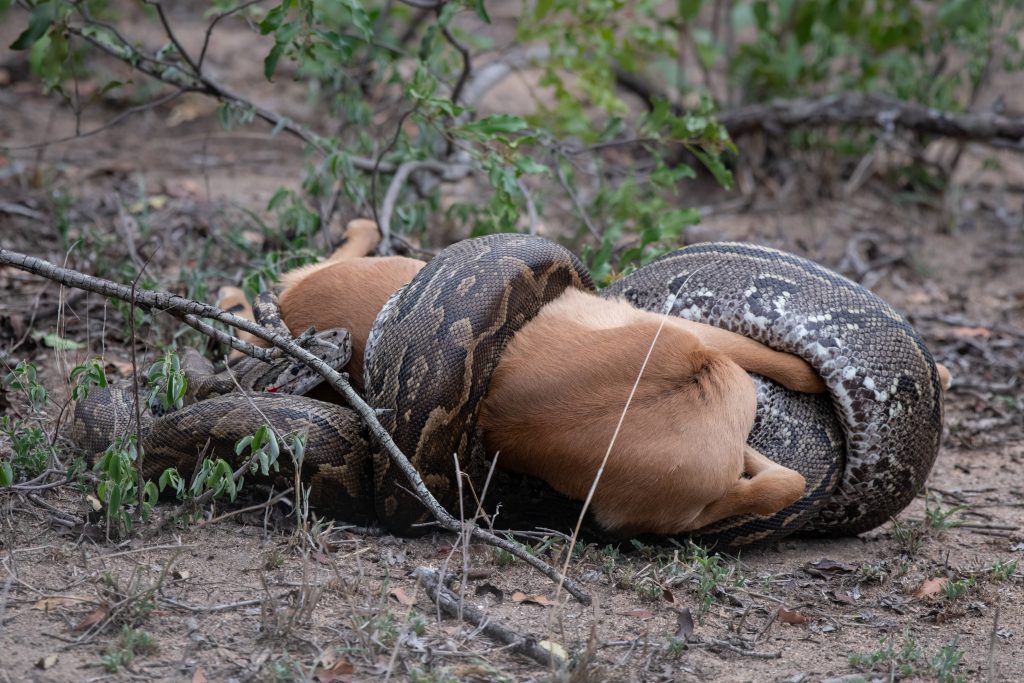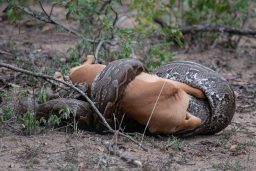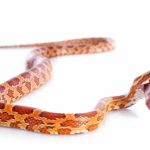Most snakes can breathe in the air via their glottis in the mouth or via their nostrils during eating depending on the species og snakes.
Many people are surprised to learn that snakes’ nostrils, don’t work not in the same way as humans do. Instead, they rely on their mouths and tongues to draw air into their respiratory systems, allowing them to breathe underwater, on land, and even in the vacuum of space!
Understanding exactly how snakes breathe when eating can help you spot them from afar, especially if you’re a herpetologist in search of your next career move! Here’s what you need to know about snakes and breathing.
Can Snakes Breathe While They Are Eating?
Once a snake has captured its prey and swallowed it whole, how does it continue breathing?
So if you’re wondering how do snakes breathe while eating? Worry not. Snakes have to eat in order to survive, which requires them to stay alive long enough to digest their food. In order for snakes and other reptiles to breathe.
One thing that all snakes have in common is that most of them must unhinge their jaws or dislocate their lower jaw in order to open up wide enough, so they can swallow large prey.
What Is The Glottis In A Snake and What Does It Do?
The glottis, a small slit-like opening on the bottom of the mouth, it is a valve that controls airflow in and out of the lungs.
How Long Can a Snake Hold Its Breath?
A snake can hold its breath for up to an hour before it needs to “surface” for air. They’re able to do so because of their large lungs, which account for about a third of their body mass. This is in contrast to humans, whose lungs only make up about 5 percent of our body mass. While holding their breath, snakes use muscle contractions to pump oxygen from their lungs into their bloodstream and, eventually, throughout the rest of their bodies.
In most cases, once they surface, they need to take several long breaths before diving again. The good news? Snakes can recover much more quickly than humans, who typically have trouble after 30 seconds underwater. Although there are different snakes around the world, their respiratory systems are remarkably similar across species and allow them to stay underwater for extended periods of time.
Can a Snake Breathe Underwater?
Yes, and no. Technically, no snakes can breathe underwater, as all snakes need to come up for air periodically.
However, some species of snake have developed mechanisms that allow them to hold their breath underwater for extended periods of time. Because water is 800 times denser than air, it takes more effort for water to push oxygen through a snake’s body; because snakes don’t come up very often, they must develop ways to efficiently transport oxygen throughout their bodies.
Do Snakes Have Lungs or Gills?
Both, sort of. Snakes don’t have actual lungs like you do. They instead absorb oxygen through a lining in their throat and chest cavity called pleurodothy (that means lung-belly).
Because they don’t have lungs, snakes can still breathe underwater by using their scales to force air into their bodies.
While they absorb oxygen from outside sources during breathing, they also use it for waste excretion and regulation of body temperature. Though some species spend time on land, most are aquatic or semi-aquatic and spend most of their lives in water. They have specialized organs—called aquatic or semiaquatic pulmonic organs—that help them take advantage of water’s unique properties when breathing.
Can Snakes That are Capable of Eating Humans Still Breathe While Swallowing?
Snakes and their human prey have long captivated our imagination. But can snakes that are capable of eating humans still breathe while swallowing? Yes, they can! Remarkably, snakes have a specialized windpipe that allows them to continue breathing even when devouring large prey. Their extraordinary anatomy enables them to open their jaws widely without blocking their airway, ensuring a smooth ingestion process.
Do Snakes and Koalas Have Unique Eating Habits?
Snakes are carnivorous creatures, consuming prey whole. Meanwhile, koalas’ eucalyptus diet consists exclusively of eucalyptus leaves, which are toxic to other animals. Both species have unique eating habits, with koalas relying solely on a single type of plant and snakes preying on a variety of animals.
Why Do Snakes Only Have 1 Lung?
Like all cold-blooded creatures, snakes have a body temperature that fluctuates with their surroundings.
To maintain an optimal body temperature of about 90 degrees Fahrenheit (32 degrees Celsius) snakes need to eat regularly and spend lots of energy.

So snakes like pythons and boas, which are at least 15 feet (4.5 meters) long and weigh over 100 pounds (45 kilograms), may go months without eating but can devour 10 percent of their body weight in just one sitting.
If someone is looking to study snakes, this guide can be helpful. People will learn how do snakes breathe while eating, whether they have gills or lungs, can they breathe underwater, and more! So please share the knowledge.










